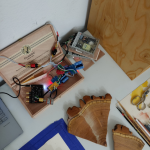Edit: not sure why the pictures are squished. Computers!
Been eyeballing these kits for awhile and bit the bullet a short time ago. I was super impressed with my Kanspea PC setup and I wanted a project that would allow me to try my hand at varnishing. Or treating wood. Or whatever you call it-- I frankly have no idea what I'm doing as I've learned upon doing further research AFTER I began working with Tung Oil. Learn from my mistakes and, maybe, don't be too afraid to use it because I'm pretty pleased so far. It's a very unique finish that really "respects" the wood. I've learned terms like Cathedral and Phloem. I'm getting a lesson in delayed gratification and a couple splinters in my index finger. I'm loving seeing the bones of the cabinet made prominent as opposed to an occluding veneer.
To begin (and I'll edit if there's any rule against posting this) I got the kits from Madisound. I've bought a few things here and there from these guys and they have always been excellent. Highly recommend. I imagine most here are familiar with them but you never know.
I'm a fella that knows my limitations. Assembling these cabinets was way above my pay grade so I paid a local carpenter and all around great guy to assemble them for me. If you're in Cape Cod and want a speaker assembled or a 17th Century side table repaired shoot me a message and I'll connect you with him. He said the quality of the Baltic Birch was superb, he was quite impressed. He also said assembly was pretty challenging even for someone that knows what they're doing, pointing out a Witness Mark in an example photo in the instruction sheet where the carpenter didn't quite get a perfect match. So I'm relieved I didn't try it myself. Here's a pic he sent me of the clamping situation. The instructions don't lie, you need clamps for days. Lots of clamps and a couple extra. If you want to do the assembly yourself... get clamps.
And here's the assembled, raw cabinets:
First step for me, sanding. I started with 220 grit and then 330 while dusting with a 3" Purdy brush. Recommend doing this plein air unless you want to coat your work area in ultra-fine, chalky particulate. I was fortunate to catch a sunny, balmy 37 degree day and took advantage. Once the cabinets were silky smooth and little residue showed up on the white glove test I moved on to the first coat of Tung.
Fortunately I did do some research on Tung products. Turns out many aren't actually Tung Oil. Trust no-one! I guess because it takes such an abhorrently long time to cure and is peckish about air flow, humidity, ambient temperature, and the Kelvin rating of your work lights most suppliers add a drying agent to their Tung Oil. Some brands of Tung Oil purportedly contain no actual Tung Oil. Long and short I ended up picking Hope's 100% Tung Oil:
For the first coat I mixed the Tung Oil 50/50 with plain old Turpentine. I had read this assisted penetration. Seemed to.
For application my intention was to sort of flood with a rag and massage it in. I chose the softest rag I had around and tried a test area. Fibers everywhere. Rags a no-go. I moved to a chip brush. This worked significantly better but eventually detached brush hairs became a nuisance. A mild one, as about fifteen minutes after the first coat was applied simply hand rubbing the cabinets removed all of them. I often felt I was molesting my cabinets. There's a definite sensuality to massaging oiled up wood with your bare hands. I've accepted this part of myself and I think I'm starting to get "wood guys".
That's enough for now I'll continue this post later.
Been eyeballing these kits for awhile and bit the bullet a short time ago. I was super impressed with my Kanspea PC setup and I wanted a project that would allow me to try my hand at varnishing. Or treating wood. Or whatever you call it-- I frankly have no idea what I'm doing as I've learned upon doing further research AFTER I began working with Tung Oil. Learn from my mistakes and, maybe, don't be too afraid to use it because I'm pretty pleased so far. It's a very unique finish that really "respects" the wood. I've learned terms like Cathedral and Phloem. I'm getting a lesson in delayed gratification and a couple splinters in my index finger. I'm loving seeing the bones of the cabinet made prominent as opposed to an occluding veneer.
To begin (and I'll edit if there's any rule against posting this) I got the kits from Madisound. I've bought a few things here and there from these guys and they have always been excellent. Highly recommend. I imagine most here are familiar with them but you never know.
I'm a fella that knows my limitations. Assembling these cabinets was way above my pay grade so I paid a local carpenter and all around great guy to assemble them for me. If you're in Cape Cod and want a speaker assembled or a 17th Century side table repaired shoot me a message and I'll connect you with him. He said the quality of the Baltic Birch was superb, he was quite impressed. He also said assembly was pretty challenging even for someone that knows what they're doing, pointing out a Witness Mark in an example photo in the instruction sheet where the carpenter didn't quite get a perfect match. So I'm relieved I didn't try it myself. Here's a pic he sent me of the clamping situation. The instructions don't lie, you need clamps for days. Lots of clamps and a couple extra. If you want to do the assembly yourself... get clamps.
An externally hosted image should be here but it was not working when we last tested it.
And here's the assembled, raw cabinets:
An externally hosted image should be here but it was not working when we last tested it.
First step for me, sanding. I started with 220 grit and then 330 while dusting with a 3" Purdy brush. Recommend doing this plein air unless you want to coat your work area in ultra-fine, chalky particulate. I was fortunate to catch a sunny, balmy 37 degree day and took advantage. Once the cabinets were silky smooth and little residue showed up on the white glove test I moved on to the first coat of Tung.
Fortunately I did do some research on Tung products. Turns out many aren't actually Tung Oil. Trust no-one! I guess because it takes such an abhorrently long time to cure and is peckish about air flow, humidity, ambient temperature, and the Kelvin rating of your work lights most suppliers add a drying agent to their Tung Oil. Some brands of Tung Oil purportedly contain no actual Tung Oil. Long and short I ended up picking Hope's 100% Tung Oil:
An externally hosted image should be here but it was not working when we last tested it.
For the first coat I mixed the Tung Oil 50/50 with plain old Turpentine. I had read this assisted penetration. Seemed to.
For application my intention was to sort of flood with a rag and massage it in. I chose the softest rag I had around and tried a test area. Fibers everywhere. Rags a no-go. I moved to a chip brush. This worked significantly better but eventually detached brush hairs became a nuisance. A mild one, as about fifteen minutes after the first coat was applied simply hand rubbing the cabinets removed all of them. I often felt I was molesting my cabinets. There's a definite sensuality to massaging oiled up wood with your bare hands. I've accepted this part of myself and I think I'm starting to get "wood guys".
An externally hosted image should be here but it was not working when we last tested it.
That's enough for now I'll continue this post later.
Last edited:
cont.
Having realized I wouldn't get far with chip brushes, I did some research and read that steel wool was recommend as an applicator/sander. I immediately thought steel wool was deadly business, having only used it to clean sinks and pans. Turns out it's around 1000 grit and terrific for wood. So off I went to the Hardware Store. I was fortunate to speak with a knowledgeable woman in the paint department that recommended I use synthetic wool pads. She mentioned that most of the boat guys use them reason being that bits of the steel wool can break off into the grain of the wood and, over time, rust and fleck your precious project with green lines. I went ahead and got the synthetic pads, the finest and second-to-finest grit.

They worked a charm. I lightly saturated the speakers with the white pad for the following coats. A day after each coat I would extremely delicately-- barely touching-- sand with the darker pad and pick up slight amounts of gooey residue. Then "dust" and rub with my hands until the surface was slippery smooth to the touch. I allowed 3-4 days between coats for curing. I should state that I know now that this is technically the wrong way to do things but I'm pretty happy with the results so far.
Coat 2:
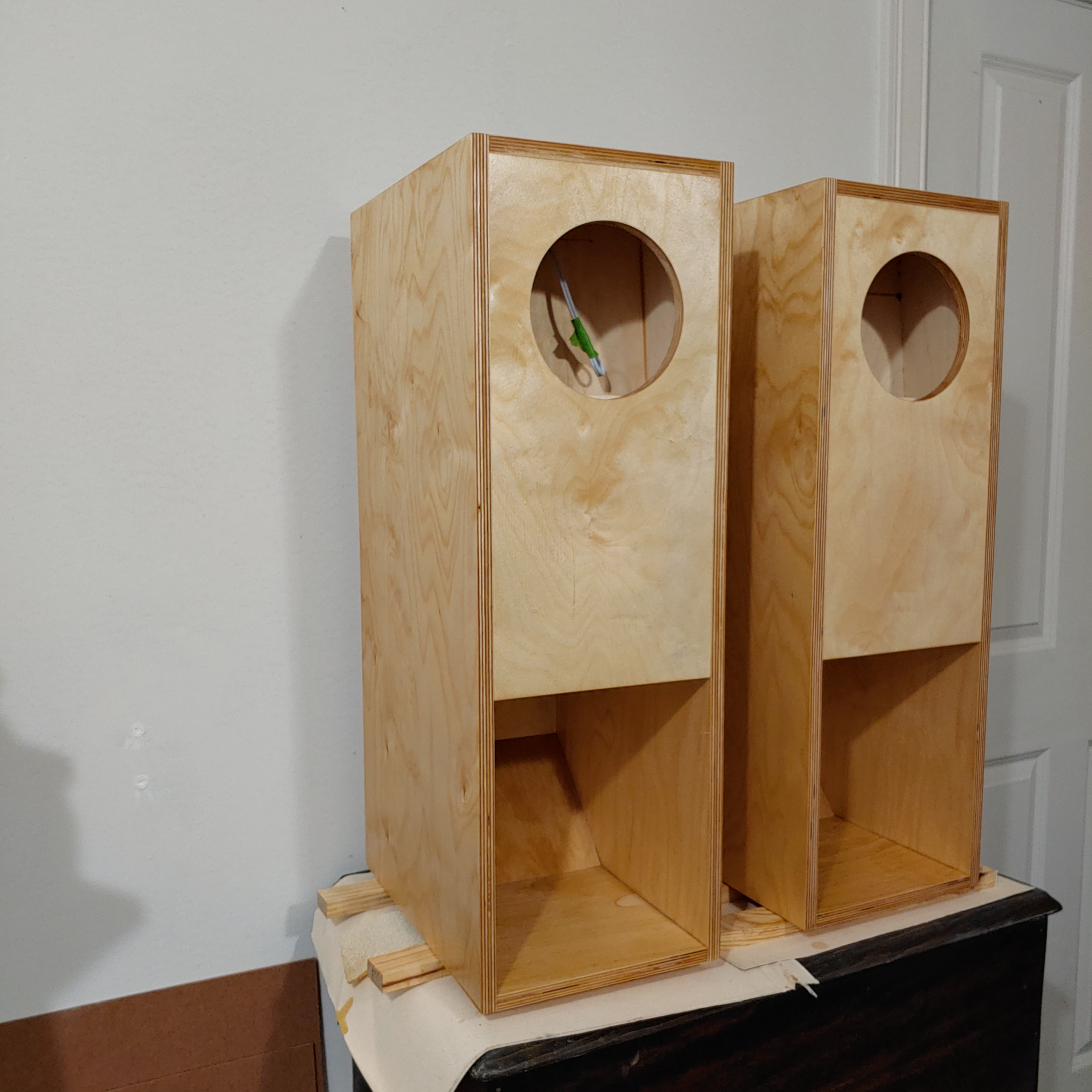
Coat 3:
Coat 4:
You can see there isn't a dramatic deepening of contrast in the grain or darkening of color, the primary benefit has been the sheen and smoothness of the surface. They feel silky, almost as if there is a coating of polymer or varnish, yet just look like wood. If that makes sense. For instance, when you look at a polyurethaned piece of furniture you can see the coat of urethane, it is sort of sitting on the surface of the wood. With the Tung you get an approximation of the urethane finger-feel but it exists in the wood, not on top.
Having realized I wouldn't get far with chip brushes, I did some research and read that steel wool was recommend as an applicator/sander. I immediately thought steel wool was deadly business, having only used it to clean sinks and pans. Turns out it's around 1000 grit and terrific for wood. So off I went to the Hardware Store. I was fortunate to speak with a knowledgeable woman in the paint department that recommended I use synthetic wool pads. She mentioned that most of the boat guys use them reason being that bits of the steel wool can break off into the grain of the wood and, over time, rust and fleck your precious project with green lines. I went ahead and got the synthetic pads, the finest and second-to-finest grit.

They worked a charm. I lightly saturated the speakers with the white pad for the following coats. A day after each coat I would extremely delicately-- barely touching-- sand with the darker pad and pick up slight amounts of gooey residue. Then "dust" and rub with my hands until the surface was slippery smooth to the touch. I allowed 3-4 days between coats for curing. I should state that I know now that this is technically the wrong way to do things but I'm pretty happy with the results so far.
Coat 2:

Coat 3:
An externally hosted image should be here but it was not working when we last tested it.
Coat 4:
An externally hosted image should be here but it was not working when we last tested it.
You can see there isn't a dramatic deepening of contrast in the grain or darkening of color, the primary benefit has been the sheen and smoothness of the surface. They feel silky, almost as if there is a coating of polymer or varnish, yet just look like wood. If that makes sense. For instance, when you look at a polyurethaned piece of furniture you can see the coat of urethane, it is sort of sitting on the surface of the wood. With the Tung you get an approximation of the urethane finger-feel but it exists in the wood, not on top.
They look great! Nice job.
I totally agree with you on the joys of tung vs standard poly. I have had great success with a set of products that bridge the gap between the two. Sutherland Welles makes a line of finishes that use a tung oil base, with varying amounts of urethane in them depending on the desired luster and build-up. They also process their finishes in a way that speeds drying time so you can recoat the next day in most cases. An added bonus is their citrus-based solvents smell good and aren't nearly so bad for you. Makes Mrs. Quattrofish much happier.
I've tried a few, and have mostly settled on Murdoch's Hard Sealer. Great stuff and highly recommended.
Tung Oil Wood Finishes by Sutherland Welles Ltd.
I totally agree with you on the joys of tung vs standard poly. I have had great success with a set of products that bridge the gap between the two. Sutherland Welles makes a line of finishes that use a tung oil base, with varying amounts of urethane in them depending on the desired luster and build-up. They also process their finishes in a way that speeds drying time so you can recoat the next day in most cases. An added bonus is their citrus-based solvents smell good and aren't nearly so bad for you. Makes Mrs. Quattrofish much happier.
I've tried a few, and have mostly settled on Murdoch's Hard Sealer. Great stuff and highly recommended.
Tung Oil Wood Finishes by Sutherland Welles Ltd.
Did one last coat, and around fifteen minutes after application used the finishing pad ever so gently. Speakers are now slippery smooth and will have been curing in a well-ventilated room for 3 days. I'm going to pre-drill and install the drivers, cups, and fill tomorrow. If anyone has opinions on best fill placement I'd be glad to hear them. I'll shortly give impressions on the initial sound, and am well aware that these drivers will take some time to break in. I haven't decided which amp I'm going to use and am currently tinkering with a 7498, Dual-mono 3118s, 3110s, and 8932s. Using a Khadas Tone 1 DAC and FLAC files or Tidal as a source. Alps or PEC carbon pot which I'll be damned beats the Alps to my ears.
@Quattrofish thanks for the recommendation. I have considered using some Damar crystals dissolved in Turpentine mixed with the Tung for a final coat, but I think that would require waiting at a minimum 30 days for the Tung to fully cure. I'm also concerned it would add a surface relic that I don't want. I really enjoy that the wood is so... unblemished? That isn't the word. It feels like a palette that I've primed with linseed oil and used a few times-- that hasn't been over saturated but is imbued with solidity. The easel in some of the shots might give away that I make paintings. Here are a bunch of pics and the first is the finishing pad after the final "polishing", if ever anyone wants to know what to expect if they attempt my method. Which is the incorrect method but I think they're alright for a first time.
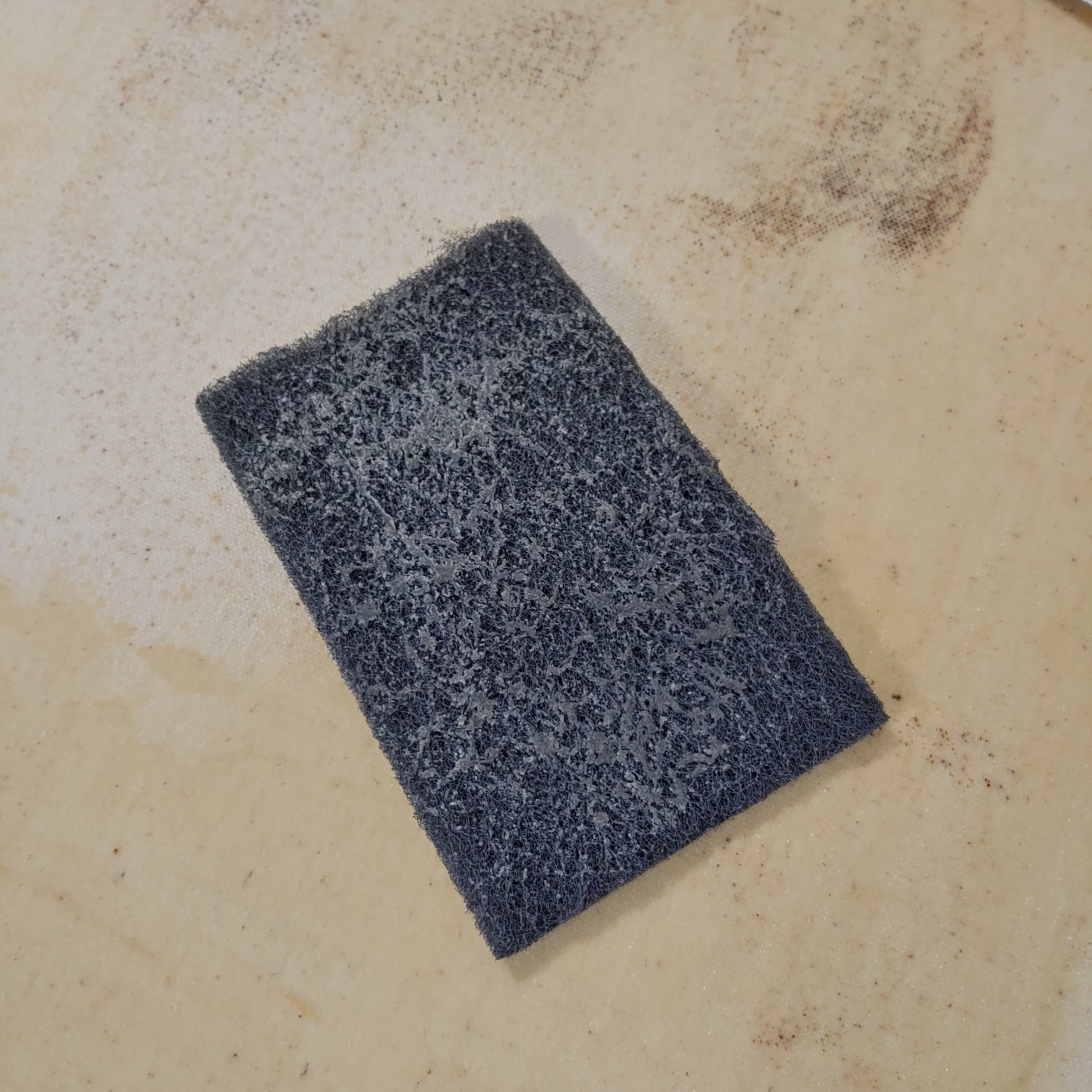
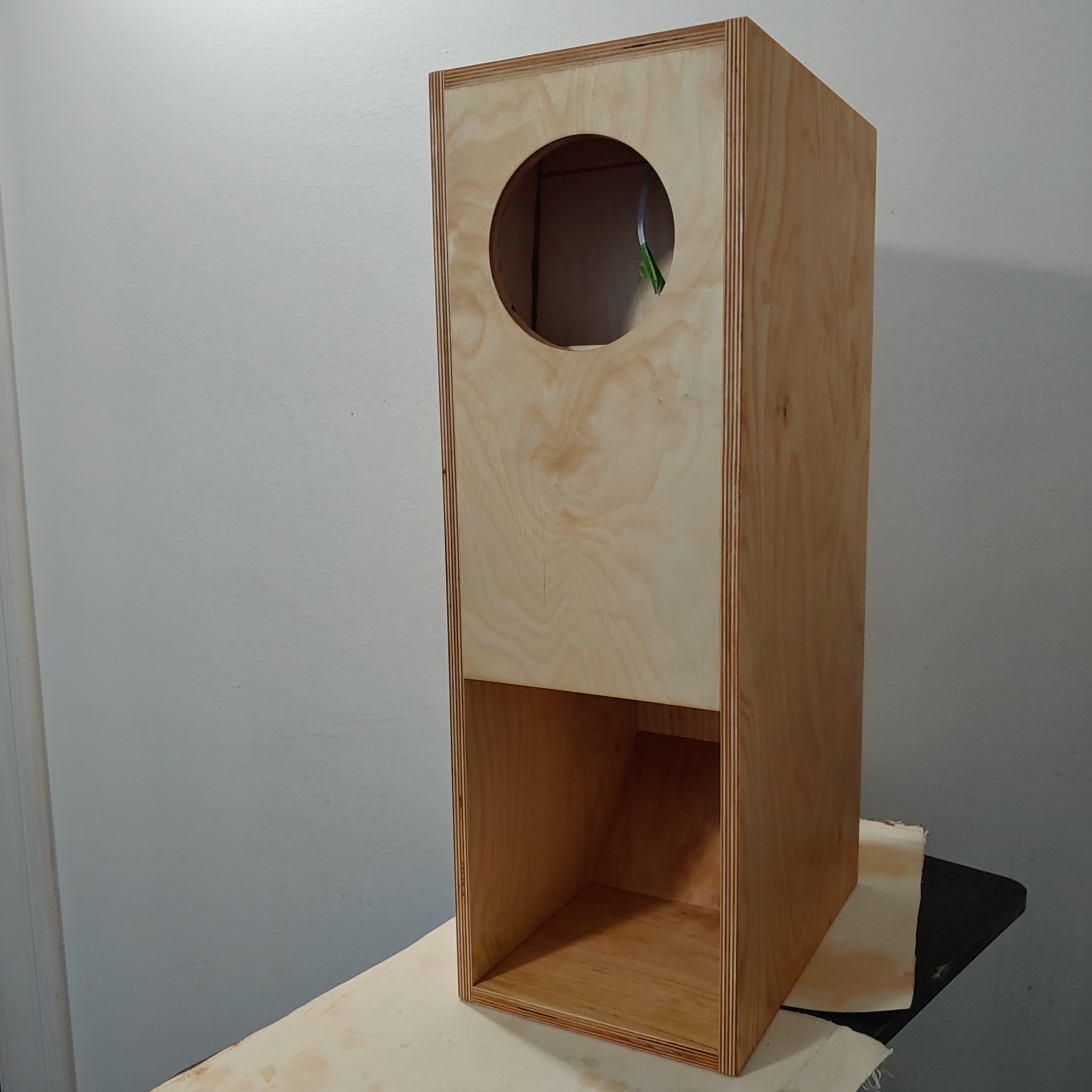
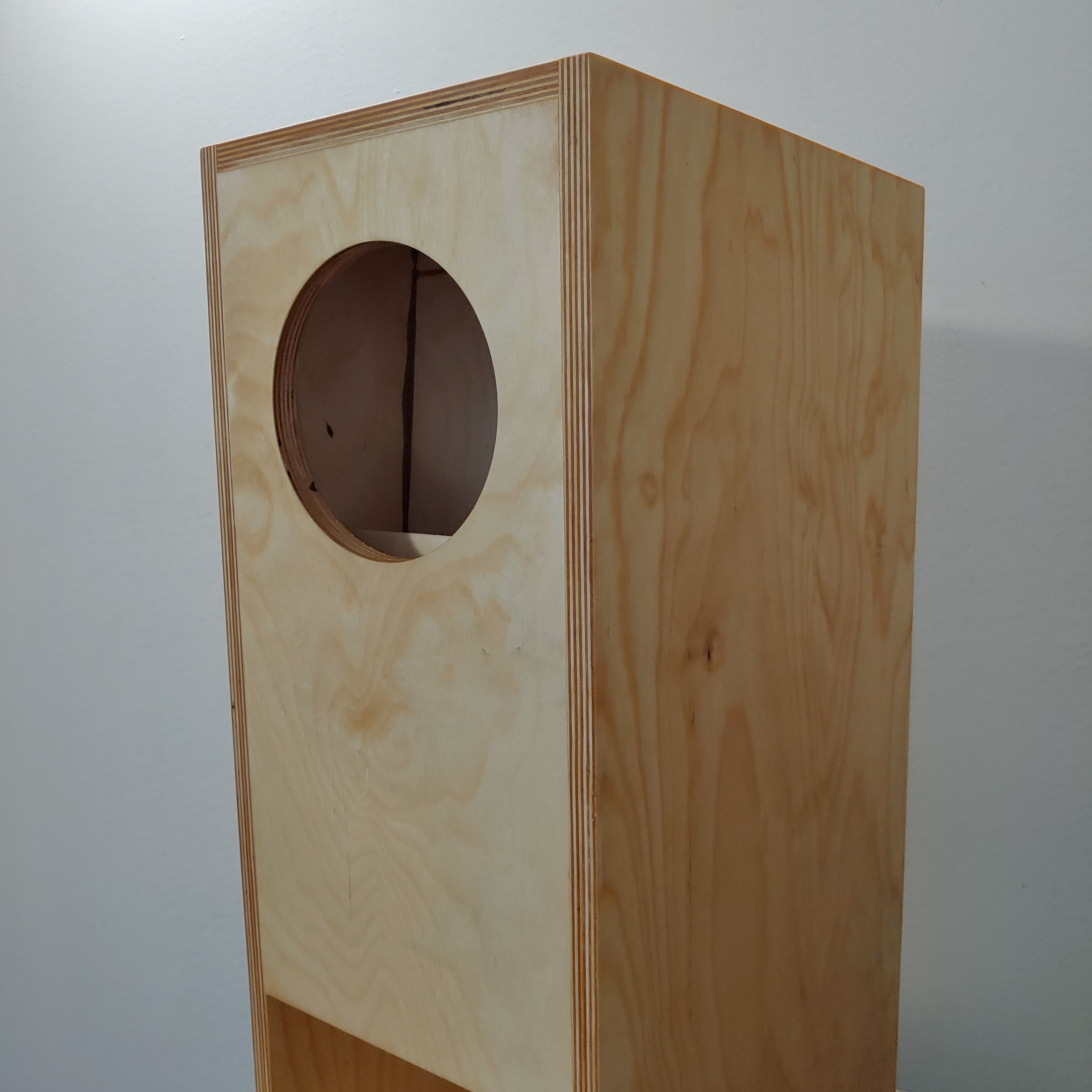
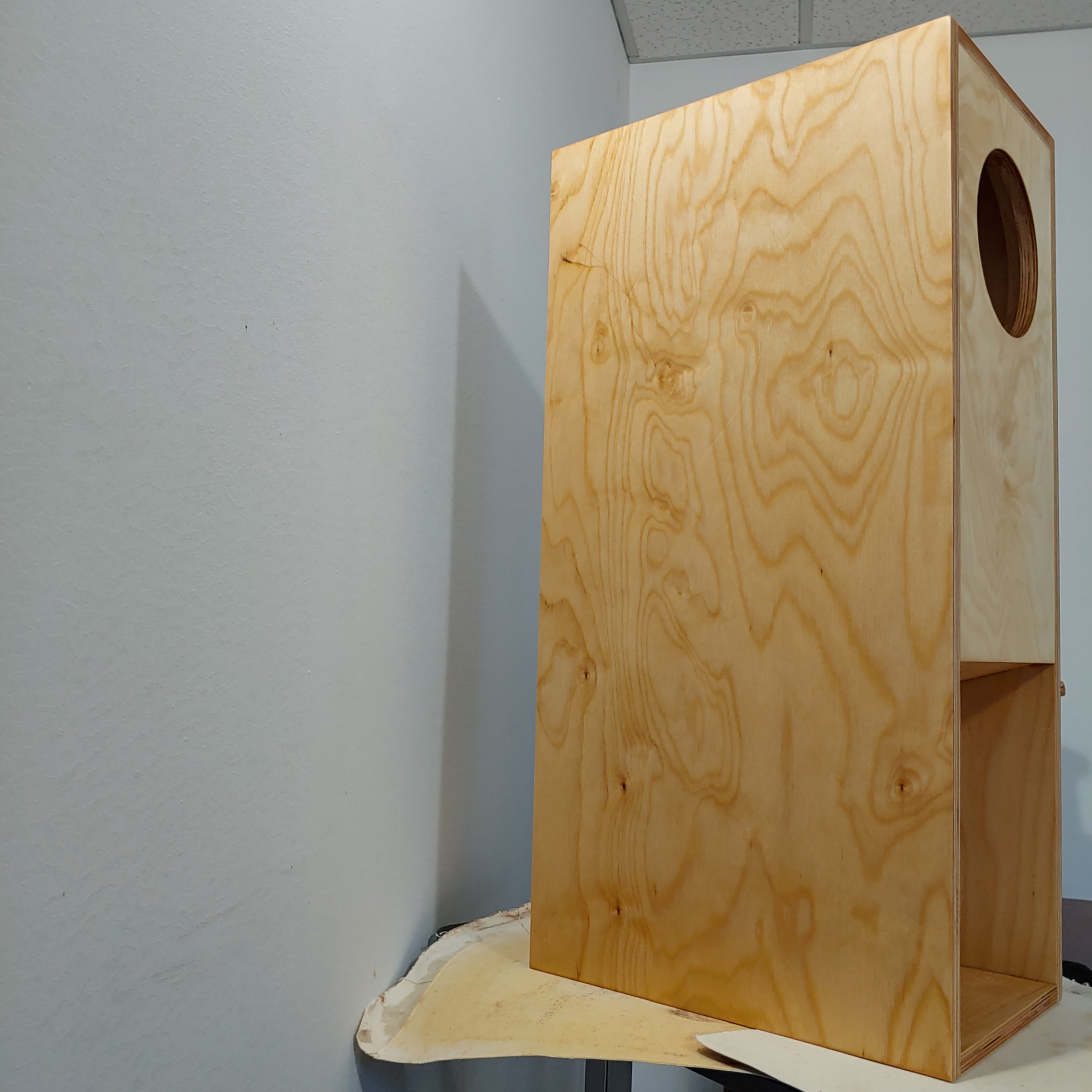
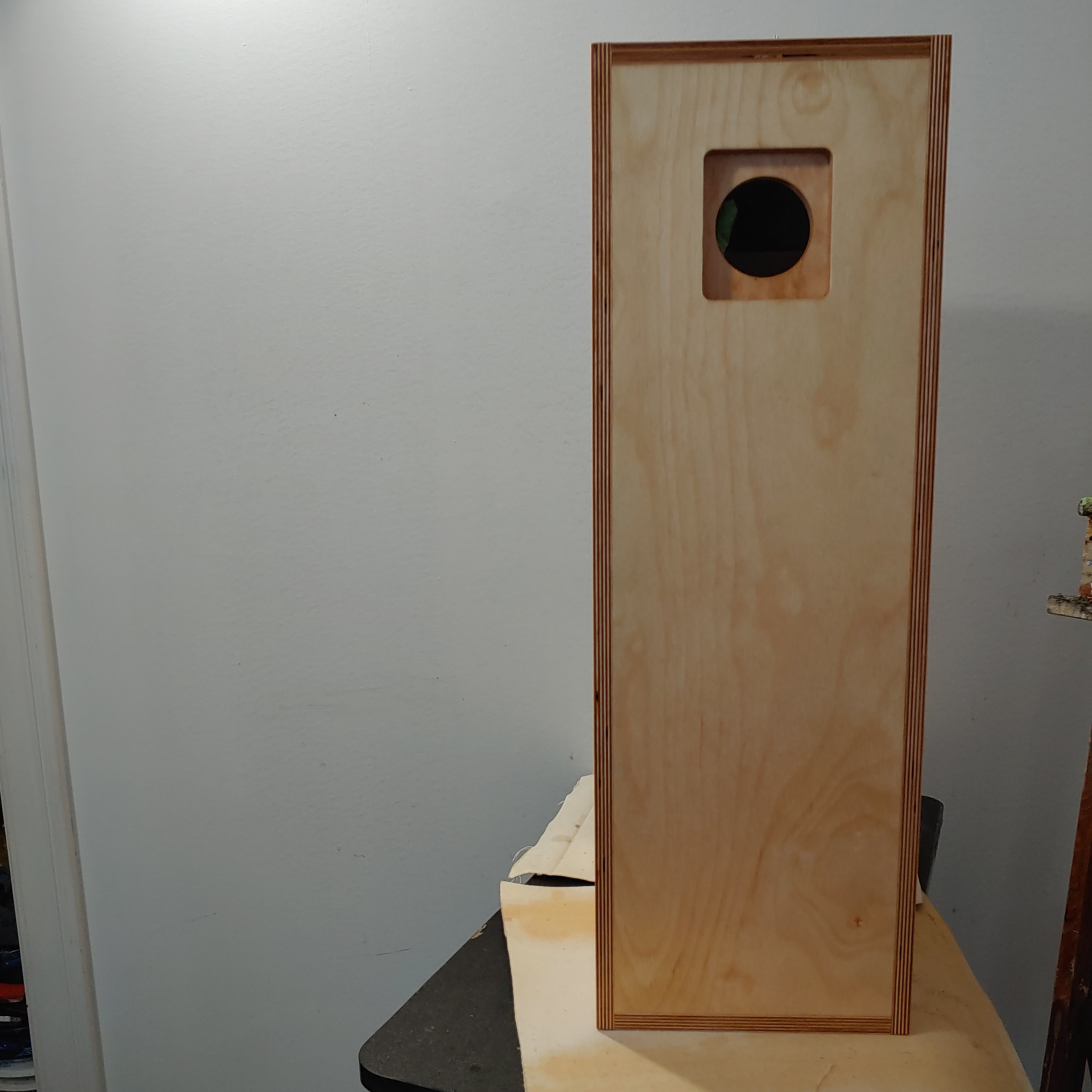


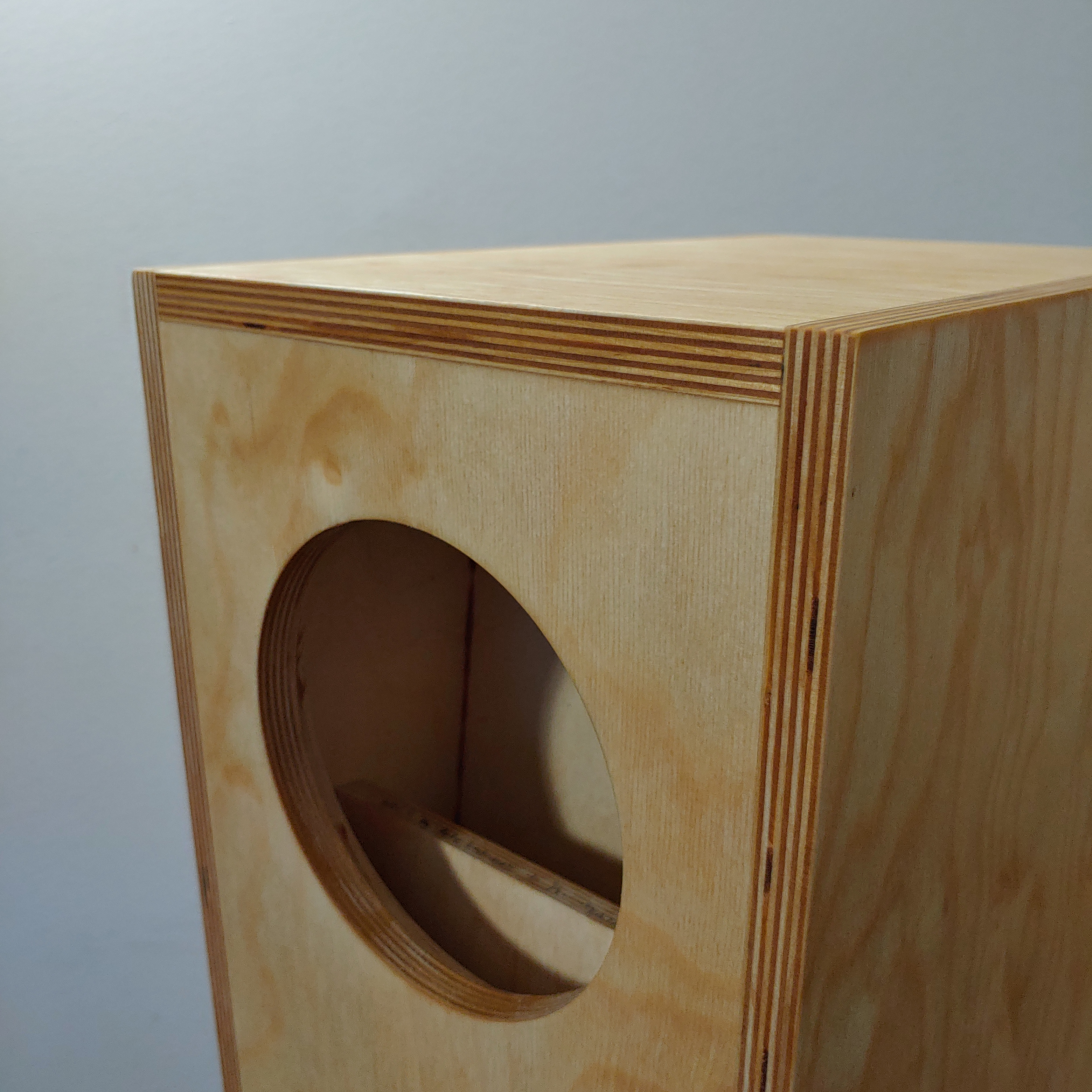

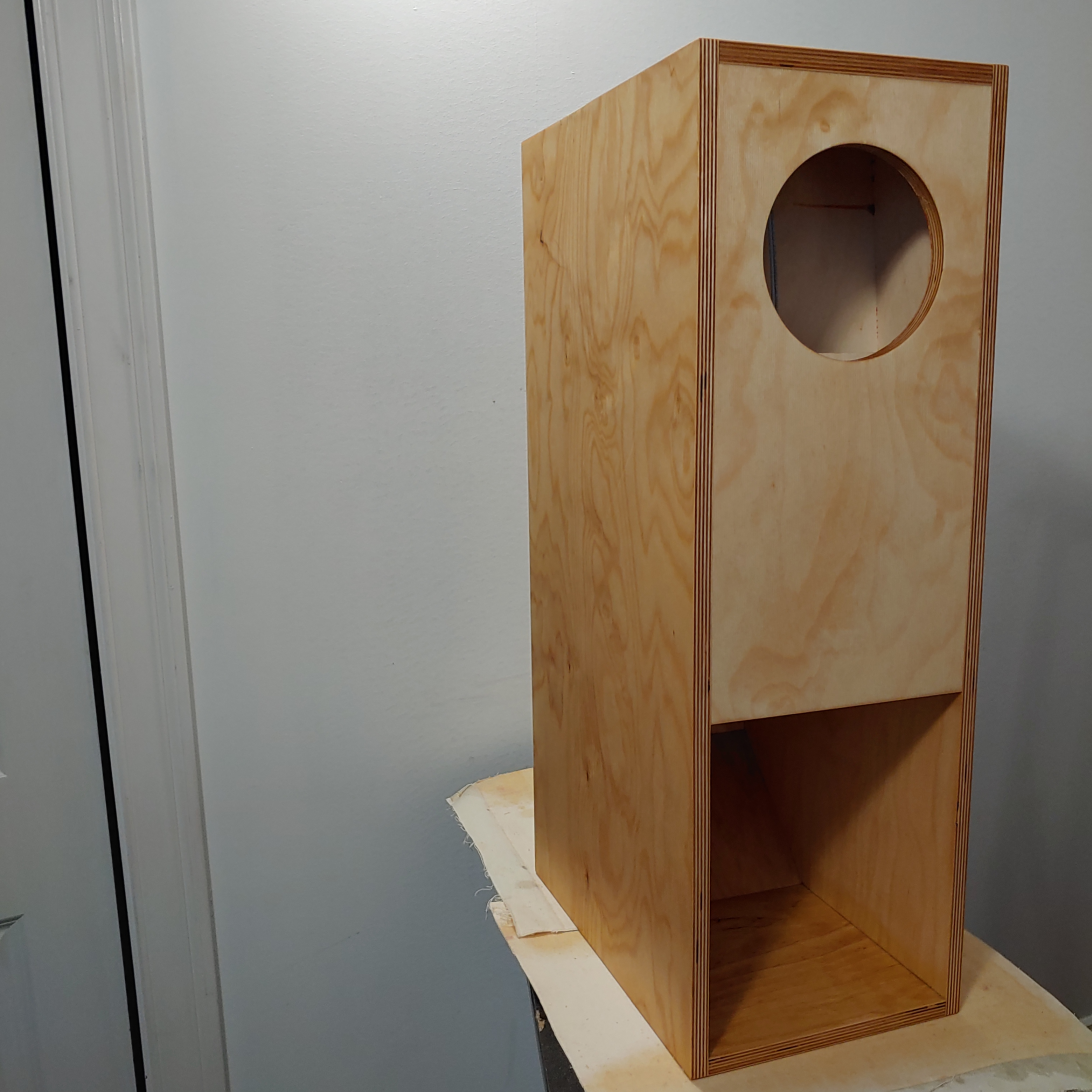
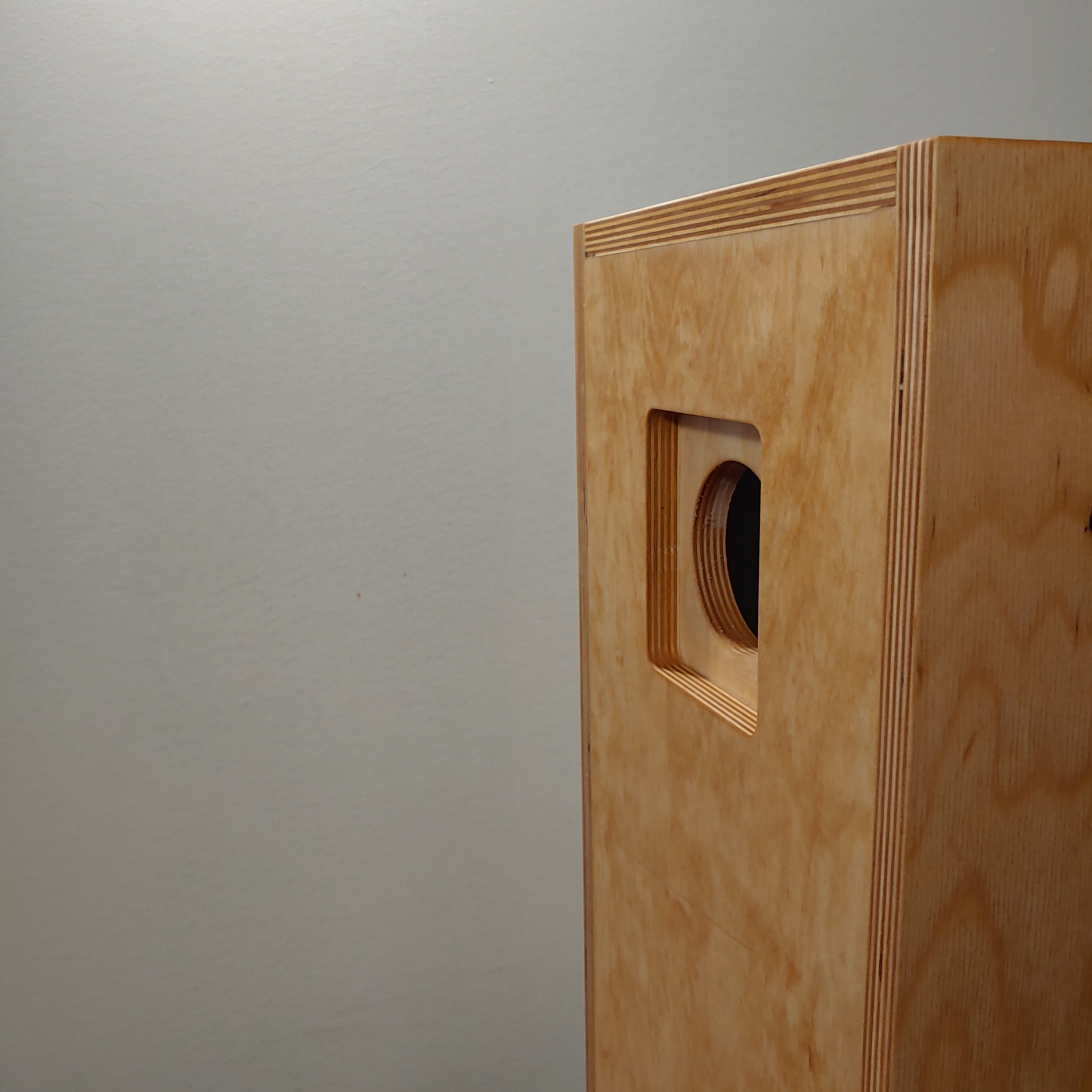
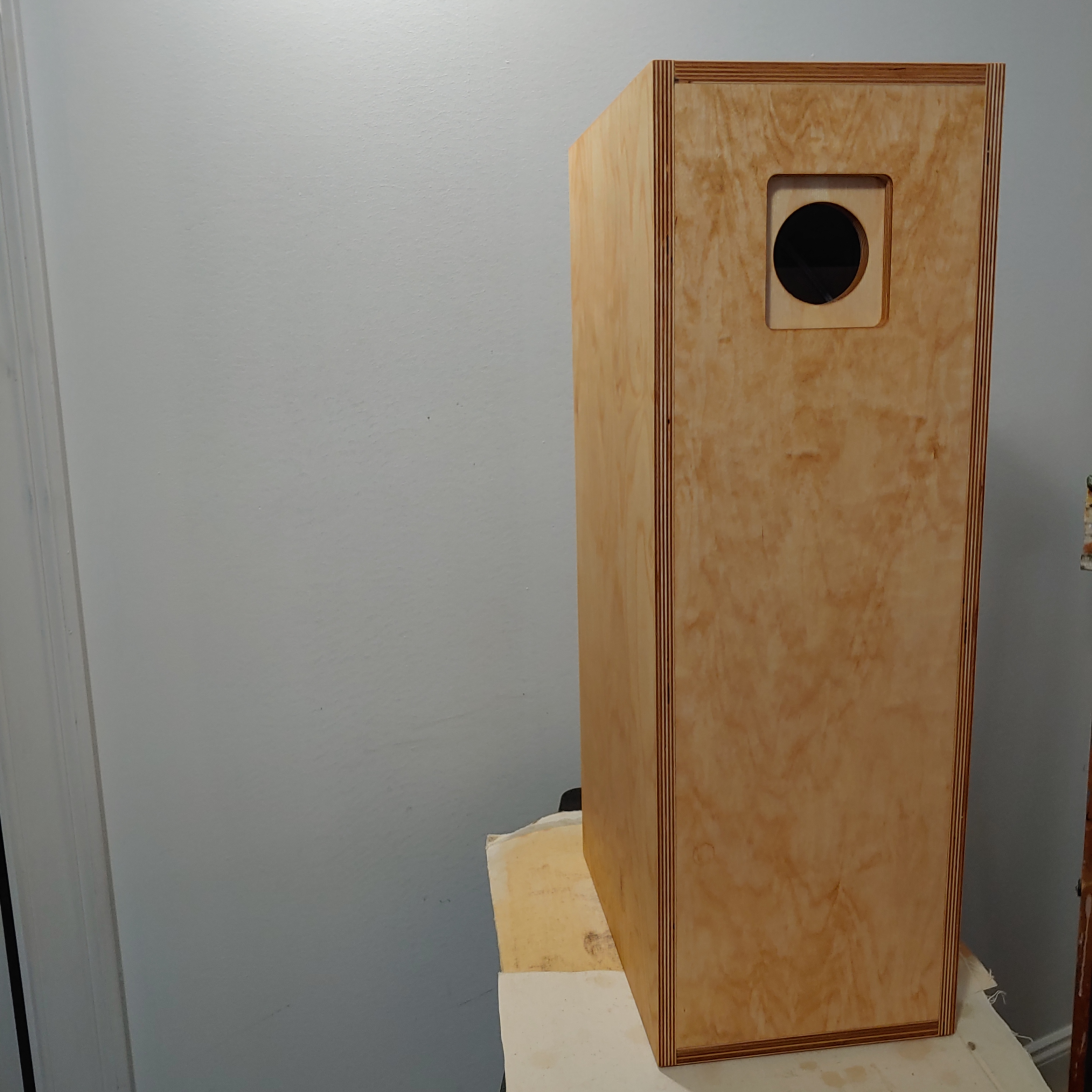


@Quattrofish thanks for the recommendation. I have considered using some Damar crystals dissolved in Turpentine mixed with the Tung for a final coat, but I think that would require waiting at a minimum 30 days for the Tung to fully cure. I'm also concerned it would add a surface relic that I don't want. I really enjoy that the wood is so... unblemished? That isn't the word. It feels like a palette that I've primed with linseed oil and used a few times-- that hasn't been over saturated but is imbued with solidity. The easel in some of the shots might give away that I make paintings. Here are a bunch of pics and the first is the finishing pad after the final "polishing", if ever anyone wants to know what to expect if they attempt my method. Which is the incorrect method but I think they're alright for a first time.














This weekend I finally got the drivers in and had a chance to hear these speakers. TLDR, they are amazing but I should apply some finishing coat/wax in a few months when I'm certain they've cured.

Rest assured my opinions on the fe168ns BK16's aren't colored by optimism bias. I was fairly certain the we're going to sound bright and analytical out-of-the-box, brightness being a quality many seem to love in a speaker but I can't stand. I like information but I don't need it to be shrill. I also expected a fair amount of break in time before truly enjoying them. I have put roughly 15 hours of a wide assortment of music through them so far, leaving Miles Davis' Realxin'/Steamin'/Workin'/Cookin' on for the hours I couldn't be in the room.
Not bright! Not sterile, cold, and stern! They have been slowly disappearing as the sound-stage deepens and widens, instruments and vocals ebb into and out of existence calmly yet precisely. Ambient sounds reveal unheard character on Arcade Fire's "Reflector". Tom Waits warbles coherently with appropriate aggression and malaise on "Swordfishtrombones". The room Bob Dylan presses full of simple, pure folk hope while singing "I shall be released" becomes the room I'm sitting in. In the recording I can hear the corners where that hope decays.
I'm getting poetic and a bit full of it but I am really impressed. I've heard some pretty amazing setups and these speakers seem as capable as many costing profoundly more dough. Which is the goal, right? That and the fun of getting your hands in the guts. They aren't at all shrill or fussy and, these are initial impressions and presumptions, I think they will reveal more about the chain of amplification than they do about themselves. They are very neutral and uncolored in that good way that seems to elude so many speakers. I'm excited to try them with a variety of Class D projects and see what's what. I've learned over the years that it's the right combination of components that can somehow get you to that magic place-- maybe a PCM2704 sounds better in the setup than a CS4354 or whatever. Bypass caps, filter caps, snubbers. You never know what's gonna produce that ahhhhyeaaah sound. Probably because I'm not an engineer or properly educated and there are so many factors that come into play regarding what you hear-- be it the room, the resistors, your mood, or your sinus pressure.
As far as my finish goes I'm still very pleased with the way they look but the Tung has definitely sunk in quite a bit. They are no longer smooth to the touch, sadly. I imagine another coat or fifteen would remedy that. I'm going to test with some of the support sticks I used for drying while I enjoy my speakers and get back to painting for a little while. I want to try some Damar crystals I dissolved in turpentine, perhaps mixing a test portion with some beeswax. Maybe some with Poppy oil. I'll report back positive and negative results.
I hope this thread assists anyone that might be interested in these speakers and giving the finish a go themselves. If you want the easy, wife-friendly, odorless, and quickest gratification method don't do what I did. I don't have a wife so I get certain accommodations. I'm also patient and have a long history of making and learning from mistakes.
The final product in terms of aesthetics is up to you. People like what they like. But I will say that the cabinet design-- that I believe from lurking around a bit was made by Planet10(?)-- works a charm and putting your ear to the "horn cube" gives a discernible bump to the low end with a distinct roll-off of the upper/mid range. I haven't pushed the volume past 4 yet but I'm excited to hear 11.
The fe168ns, after around 15 hours, is phenomenal. No other way to put it. Tickles me pink.
Here are the finished product pics:
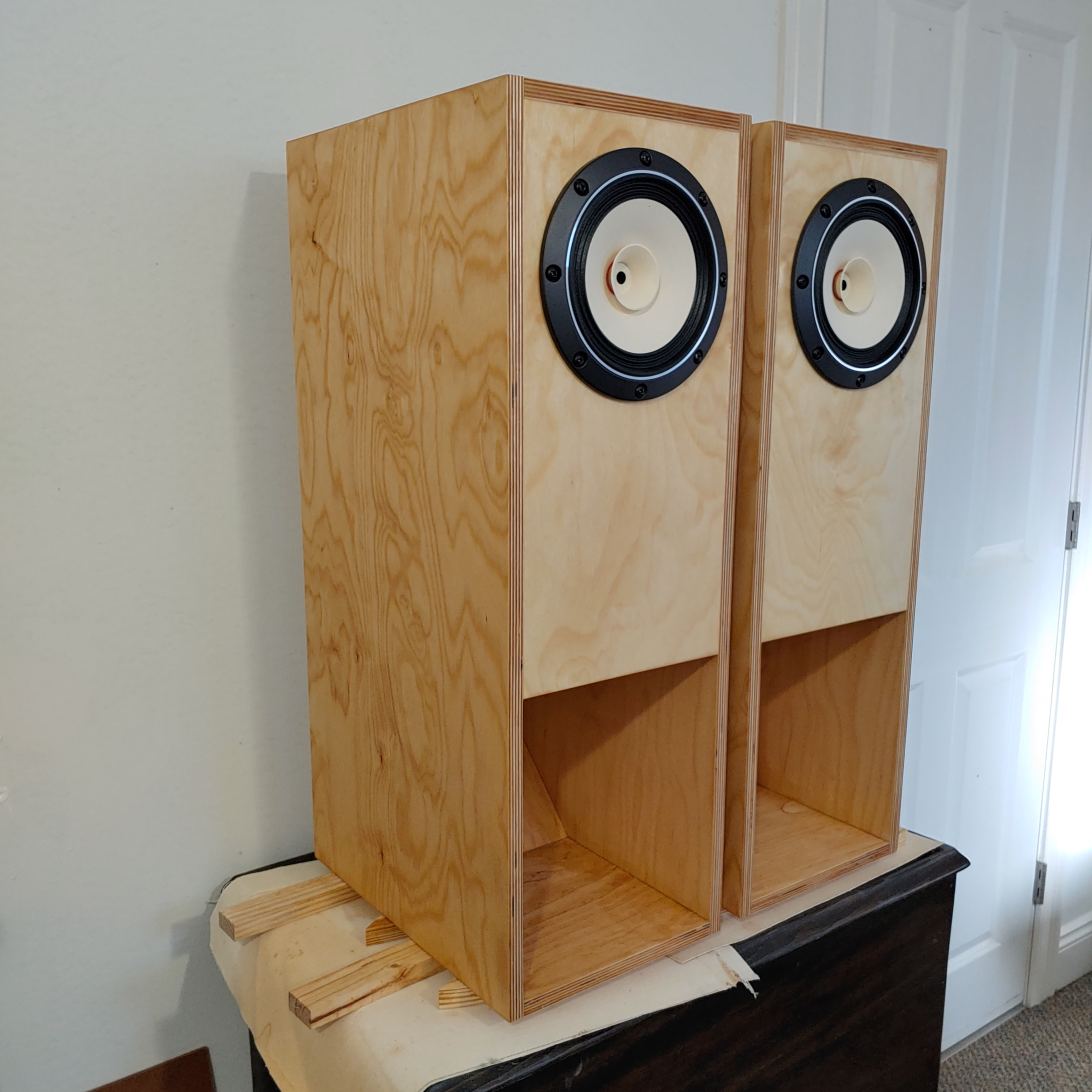


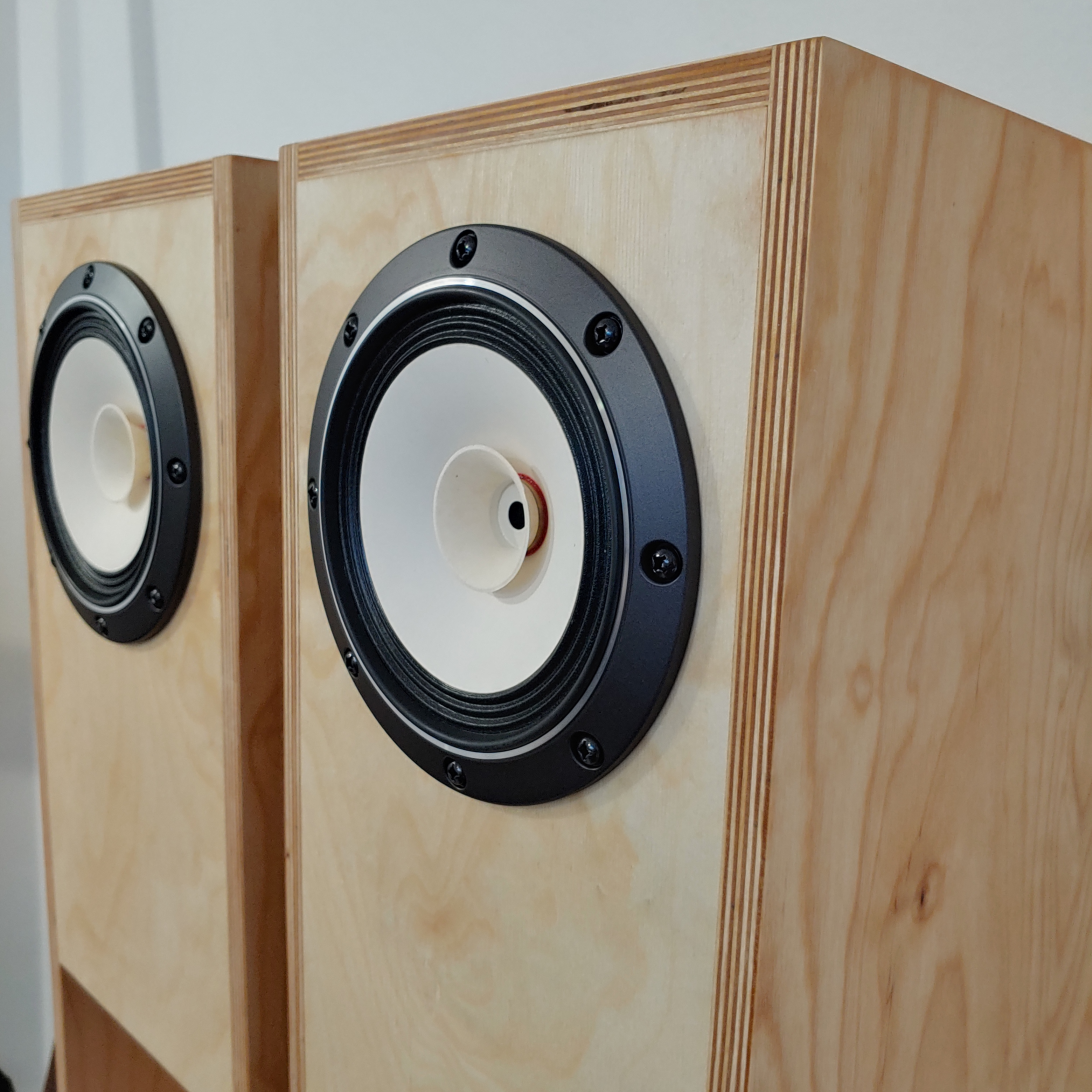
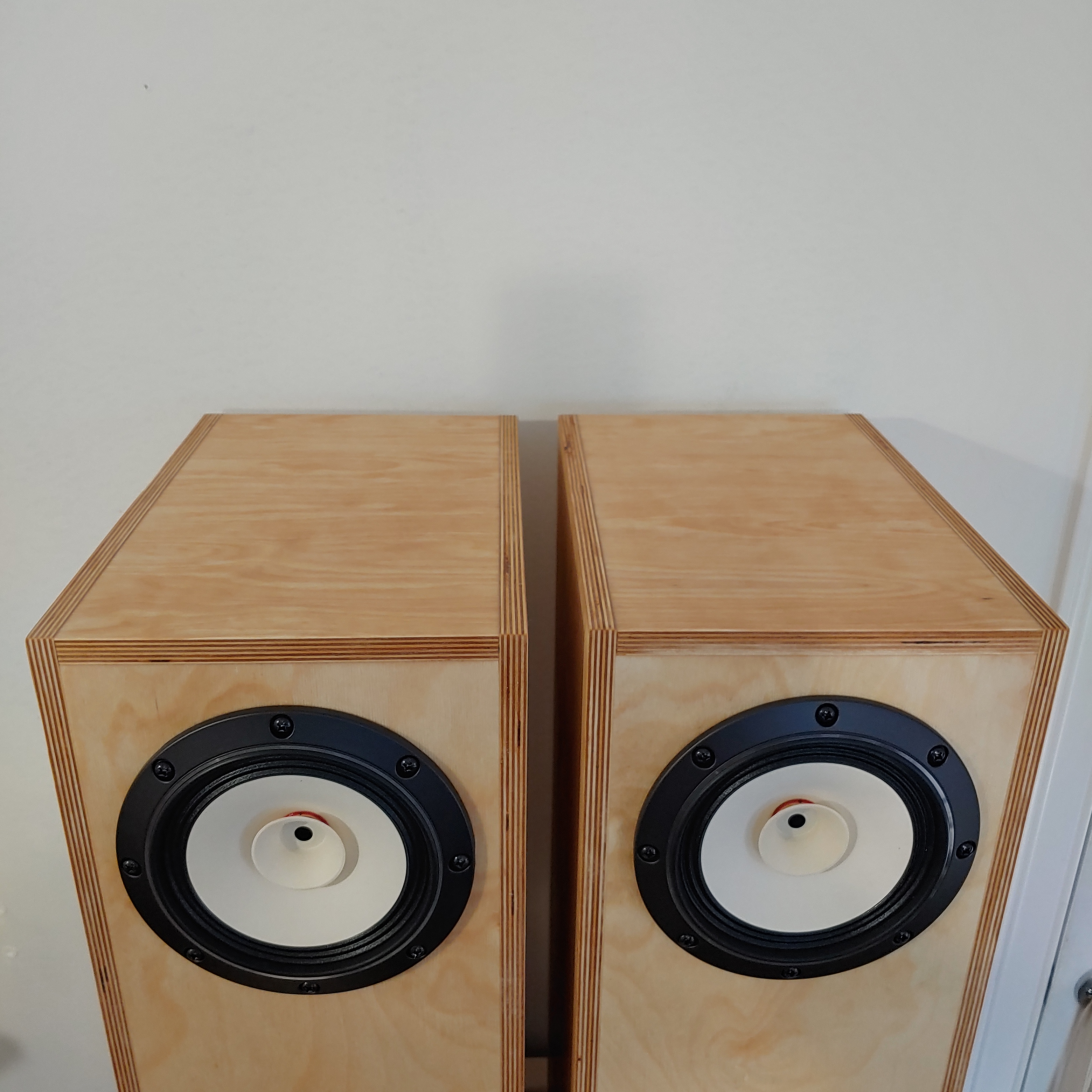


Rest assured my opinions on the fe168ns BK16's aren't colored by optimism bias. I was fairly certain the we're going to sound bright and analytical out-of-the-box, brightness being a quality many seem to love in a speaker but I can't stand. I like information but I don't need it to be shrill. I also expected a fair amount of break in time before truly enjoying them. I have put roughly 15 hours of a wide assortment of music through them so far, leaving Miles Davis' Realxin'/Steamin'/Workin'/Cookin' on for the hours I couldn't be in the room.
Not bright! Not sterile, cold, and stern! They have been slowly disappearing as the sound-stage deepens and widens, instruments and vocals ebb into and out of existence calmly yet precisely. Ambient sounds reveal unheard character on Arcade Fire's "Reflector". Tom Waits warbles coherently with appropriate aggression and malaise on "Swordfishtrombones". The room Bob Dylan presses full of simple, pure folk hope while singing "I shall be released" becomes the room I'm sitting in. In the recording I can hear the corners where that hope decays.
I'm getting poetic and a bit full of it but I am really impressed. I've heard some pretty amazing setups and these speakers seem as capable as many costing profoundly more dough. Which is the goal, right? That and the fun of getting your hands in the guts. They aren't at all shrill or fussy and, these are initial impressions and presumptions, I think they will reveal more about the chain of amplification than they do about themselves. They are very neutral and uncolored in that good way that seems to elude so many speakers. I'm excited to try them with a variety of Class D projects and see what's what. I've learned over the years that it's the right combination of components that can somehow get you to that magic place-- maybe a PCM2704 sounds better in the setup than a CS4354 or whatever. Bypass caps, filter caps, snubbers. You never know what's gonna produce that ahhhhyeaaah sound. Probably because I'm not an engineer or properly educated and there are so many factors that come into play regarding what you hear-- be it the room, the resistors, your mood, or your sinus pressure.
As far as my finish goes I'm still very pleased with the way they look but the Tung has definitely sunk in quite a bit. They are no longer smooth to the touch, sadly. I imagine another coat or fifteen would remedy that. I'm going to test with some of the support sticks I used for drying while I enjoy my speakers and get back to painting for a little while. I want to try some Damar crystals I dissolved in turpentine, perhaps mixing a test portion with some beeswax. Maybe some with Poppy oil. I'll report back positive and negative results.
I hope this thread assists anyone that might be interested in these speakers and giving the finish a go themselves. If you want the easy, wife-friendly, odorless, and quickest gratification method don't do what I did. I don't have a wife so I get certain accommodations. I'm also patient and have a long history of making and learning from mistakes.
The final product in terms of aesthetics is up to you. People like what they like. But I will say that the cabinet design-- that I believe from lurking around a bit was made by Planet10(?)-- works a charm and putting your ear to the "horn cube" gives a discernible bump to the low end with a distinct roll-off of the upper/mid range. I haven't pushed the volume past 4 yet but I'm excited to hear 11.
The fe168ns, after around 15 hours, is phenomenal. No other way to put it. Tickles me pink.
Here are the finished product pics:






They look awesome! And great writeup, thanks for taking the time to share your build and listening impressions.
All the speakers I treated with only oil have become “rough” again after the oil has sunk in. If you really want a smooth surface, you might need to look for a lacquer or poly layer on top?
What would be really interesting now is for you to also invest in a pair of Fe166nv and do a shoot out!
It comes easier to me to spend other peoples money
All the speakers I treated with only oil have become “rough” again after the oil has sunk in. If you really want a smooth surface, you might need to look for a lacquer or poly layer on top?
What would be really interesting now is for you to also invest in a pair of Fe166nv and do a shoot out!
It comes easier to me to spend other peoples money
Thanks for the replies fellas, and I'd be fond of a shoot out but the next driver on my wish list is the MAOP 11.
As an addendum, the fe168ns is very revealing of the amp driving it. I find my 3118 un-listenable. It's good by all accounts but fatiguing and "bright", to my tastes. I think I've fallen for the 8932 chip, just gets out of the way and lets me enjoy the music.
I'm still messing with amp/DAC/pot combos and searching for what's "new". Haven't messed with Class D in around 5 years.
As an addendum, the fe168ns is very revealing of the amp driving it. I find my 3118 un-listenable. It's good by all accounts but fatiguing and "bright", to my tastes. I think I've fallen for the 8932 chip, just gets out of the way and lets me enjoy the music.
I'm still messing with amp/DAC/pot combos and searching for what's "new". Haven't messed with Class D in around 5 years.
Attachments
Oh yeah I think I might be wrong about Planet 10 designing the cabs, it may have been ScottMoose? I'm digging around threads and my memory is crap. But I want to credit whoever designed it and say "damn fine job, these are lovely and appreciated and make my ears and eyes happy".
Lovely work indeed, but much as it would be nice to take credit, neither Dave nor I designed these enclosures. We did the BK12m as a compact addition to the range for Madisound, as there wasn't a BK for the then-current FE126En*. The larger BK kits were Fostex designs, derived from several prior Nagaoka offerings.
*As an aside, the BK12m should work as well, or a bit better with the current FE126NV than it did with the old FE126En.
*As an aside, the BK12m should work as well, or a bit better with the current FE126NV than it did with the old FE126En.
Full range drivers usually take like 100 hours to break in so if they sound good now it should get really nice as time goes by.
They are just getting better and better. Happy as the proverbial pig.
An update, not sure how long it's even been but the Tung is STILL NOT DRY.
lol.
Fair warning to any that try it. It's no detriment that I can notice and they are still pretty smooth to the touch.
- Status
- This old topic is closed. If you want to reopen this topic, contact a moderator using the "Report Post" button.
- Home
- Loudspeakers
- Full Range
- BK16 kit with Fostex FE168NS 6.5" Drivers-- Adventures in Tung Oil Application
